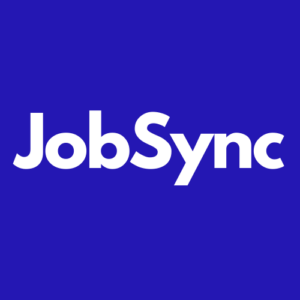
Usually, blue-collar jobs suffer the most in an economic downturn. Yet in the U.S. and globally, hourly and frontline workers are seeing more opportunities while white-collar jobs are hitting a wall. What’s happening, and what does it mean for recruiters in the challenging blue-collar sector?
Across the country, employers are still hiring. Payrolls rose by 278,000 in May while the number of unemployed workers is near historic lows. Based on this high-level perspective, you’d be forgiven for thinking that the labor market is not only lively but a rare bright spot in a challenging economic climate.
The reality, however, is far more complex. When you start dissecting jobs in detail, it’s clear that workers are splitting into two very different realities. Blue-collar jobs remain abundant, while higher-paid knowledge workers are facing layoffs and retrenchments in what the Wall Street Journal has dubbed a “Richcession.”
How do you hire in these very different economies? Let’s break it down so you can understand the reasons behind what’s happening in the economy.
White Collar Struggles, Blue Collar Booms
In 2023, the bulk of America’s job growth is located in blue-collar jobs. These jobs usually involve manual or service labor and typically are paid hourly. Most notably, the leisure and hospitality sector, which comprises hotels, restaurants and bars, added a hefty 208,000 jobs in May, accounting for a massive 75% of the month’s total job gains. Mining, construction, and trade and transportation also added significant jobs.
On the other side of the spectrum, white-collar workers are having a much harder time finding employment. After years of high demand and record-breaking salaries, companies are slamming the brakes on hiring in the knowledge sector. According to Forbes, nearly 198,000 workers have been laid off this year in the tech sector alone, including some brutal cuts at Amazon, Google and Meta. Hiring freezes and layoffs have also rippled across Wall Street, professional services and the media.
Pandemic Losers are Now the Winners
In many ways, the current situation is a reversal of the first year of the pandemic. Then, it was construction and service jobs that collapsed, especially in the leisure and hospitality sectors which relied on close interaction between people. Professional talent, on the other hand, was hoarded. Low inflation, easy credit and technology made it easy for companies to keep their office workers employed and working on something, even as governments ordered physical businesses to close.
For companies that had fought hard to get their talent, labor hoarding made perfect sense. Some were even able to overshoot their hiring goals due to the rapid transition to remote working, which opened up access to new talent pools.
At the time, commentators speculated as to how the pandemic-induced, white-collar hoarding bubble might burst as the economy reopened. Now we’re living it — alongside a raft of economic changes that have significant knock-on effects for hourly jobs.
Where Have All the Workers Gone?
When companies engaged in talent hoarding during the pandemic, there was less exceptional talent available in the marketplace. Recruiters had to start pulling people out of the top of the hourly-wage bucket into the white-collar bucket to fill their work needs. For example, we saw a large number of restaurant and hotel workers being sucked into entry-level customer service roles. The low barriers to entry created by work-from-home made it easy for these workers to transfer into the office sector, leaving a gap in the blue-collar bucket that’s still being felt today.
Now, it’s no surprise that wages go up in sectors where the talent supply is anemic. However, in today’s economy, we’re seeing regular inflation go up as well as wage inflation. This creates a situation that’s self-reinforcing — a spiral in which inflation leads to people demanding higher wages to be able to afford their basic living expenses, fueling even higher inflation.
Companies, faced with significantly higher payroll costs, are realizing that they are over-employed in some areas. They’re also noticing that if you lay off, your stock price goes up. Layoffs are a cost-cutting measure that make the numbers look better in the short term. That’s the main reason why we have seen a glut of layoffs among well-paid professionals in finance and tech.
But here’s the rub — the workers that are being pushed back into the available talent pool are not the same people that were pulled out of the hourly workforce in the pandemic years. They are more skilled, and there aren’t necessarily jobs for them.
And so, it’s very much a tale of two economies right now. The higher-income, white-collar, knowledge worker is experiencing a recession. The lower-income, blue-collar worker is not. And it’s recruiters in the hourly sector that are feeling the pain.
How to Recruit in the Blue-Collar Talent Drought
Blue-collar recruiters are in a pinch when it comes to recruiting and retaining talent. Yes, there are significant talent shortages, but by far the biggest grind is dealing with persistently high levels of churn. Without generalizing too much, you can usually uncover a motivation for why a knowledge worker is seeking your role, whether it’s career growth, the projects you’re working on, prestige, or something else. It’s much harder to uncover those motivations in a warehouse role, and that makes it tough to find engaged and committed employees who will stick around for the long haul.
Even vocations like nursing have murky motivations, as they tend to be based on lifestyle decisions rather than an unquenchable thirst to excel or get ahead. Can I manage the shift work? Can I deal with the patients, their families and the public? How much stress and burnout is associated with this job?
When recruiters are always backfilling roles, finding good people becomes a game of speed. You need to get to motivated candidates first and drive them through the recruitment funnel as quickly as possible before they change their minds or get poached by a competitor. Competing in the blue-collar drought means slashing the time-to-hire.
There are two steps you can put in place immediately:
1. Meet candidates where they are at.
Finding candidates on a job board and then asking them to click over to your corporate career site, set up an account and submit three different types of multi-factor authentication before they can log in sets you up for the recruiting equivalent of shopping cart abandonment, where candidates are needlessly lost on their way to an application. If that happens, all bets are off. You won’t get anywhere near the volume you need to fill your positions. Approximately 96% of interested candidates will abandon this process.
Meeting candidates where they’re at, on the other hand, massively increases your chances of getting the right volume of completed applications. Broadly, this means enabling candidates to apply directly from the job board or platform they found your job on at the exact moment they found your job, without any roadblocks. All the major platforms have some variation of an “Easy Apply” button where candidates can apply directly from the job board in just a few clicks — enabling this function is an easy way to get volume.
2. Don’t make applying any harder than it has to be (but don’t make it so easy, no one applying is qualified).
The risk with “Easy Apply” is that you can get high volumes of applications from candidates who are not qualified for the job, and not enough information for recruiters to screen out candidates who aren’t a good enough match. Virtually all companies need to ask some type of screening questions, otherwise recruiters have to do a lot of manual sorting to figure out who’s qualified. The risk is that you go overboard with your screening. Asking candidates to jump through hoops for the sake of hoops makes their life harder than it needs to be and raises the chances of them abandoning the application. Do they really have to say what state they’re in when they’ve already given a zip code?
Instead of asking for a candidate’s life story, it’s essential to thin the application down to what you absolutely need to know to verify the candidate can do the job and be legally compliant. Most companies only need answers to a handful of screening questions such as, “Are you over 18?” , “Are you Food Safety certified?” or “Do you have a nursing license for the state of Illinois?” to eliminate candidates who are a bad fit and move candidates who meet the requirements on to the next stage in the recruiting funnel.
The more questions you ask, the fewer applications you‘ll get. The balancing act is to create a process where as many applications as possible are submitted, at the same time as recruiters get what they need to start recruiting.
To maximize your candidate application flow, turn on easy apply and add those questions you need to enable recruiters to connect with candidates quickly. It does your team no good to speed up the application process, to then slow down the review and selection process.
Speed up to beat the blue-collar shortage
To combat the blue-collar talent shortage, you need to make the application process faster and easier than the competition — which is exactly what Job Sync does. Our technology embeds your custom screening questions directly into the job board application process so that candidates can apply directly from the platform they are on, without the hassle of clicking through to another site. Completed applications from qualified candidates are then dropped directly into the ATS, so recruiters can make much faster decisions around who to bring forward to the interview stage.
Keeping the recruiting process as efficient as possible and being able to make prompt offers to applicants is key to avoid missing out when talent is scarce. Be smart in your recruiting tech, and see the results of more qualified candidates in your pipeline, less manual screening work, and accelerated hiring times.


